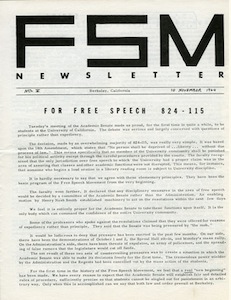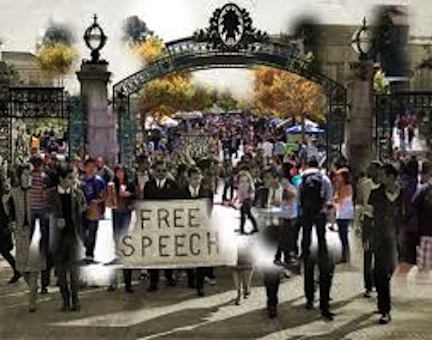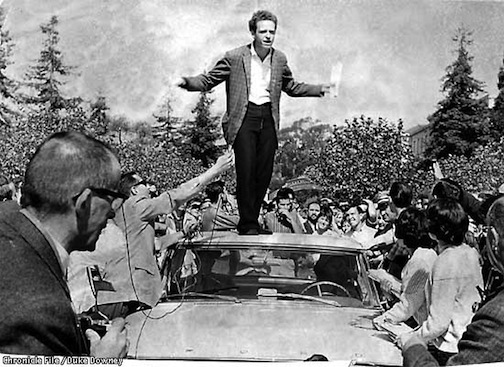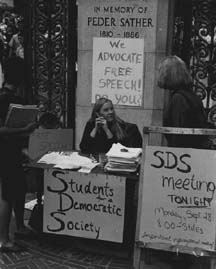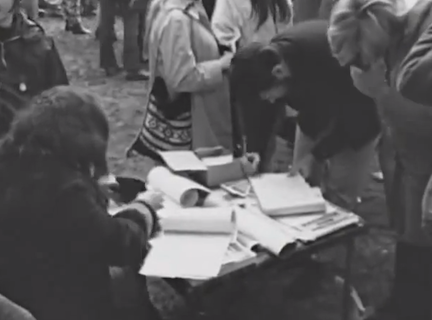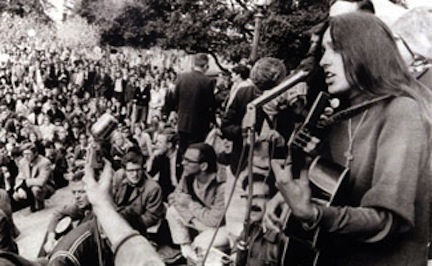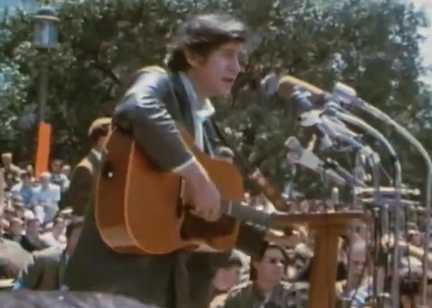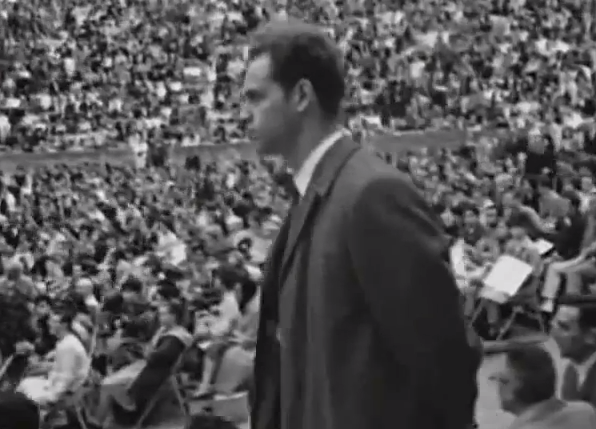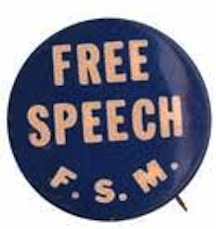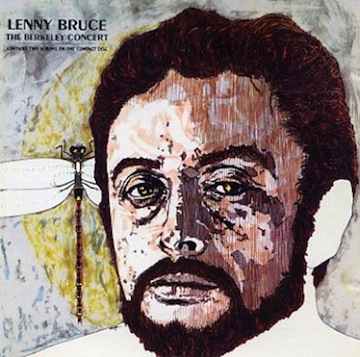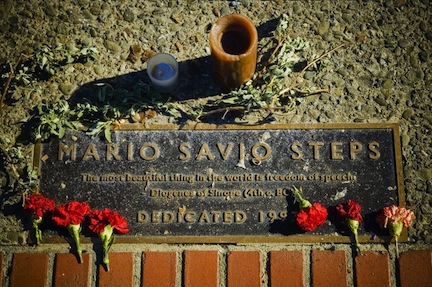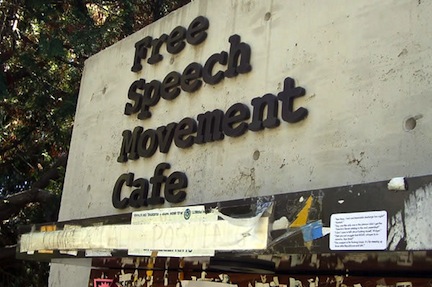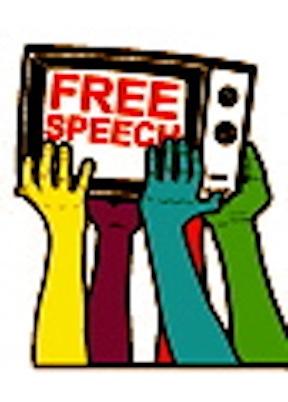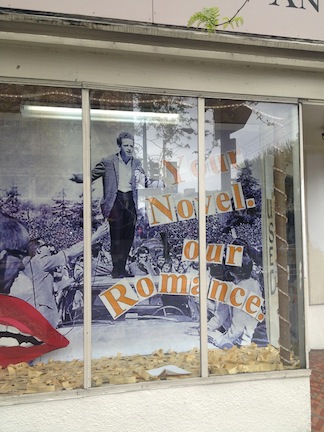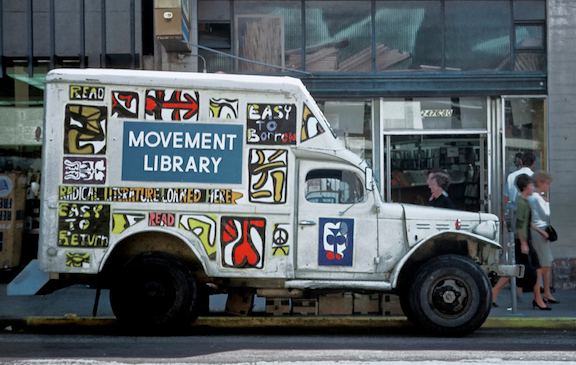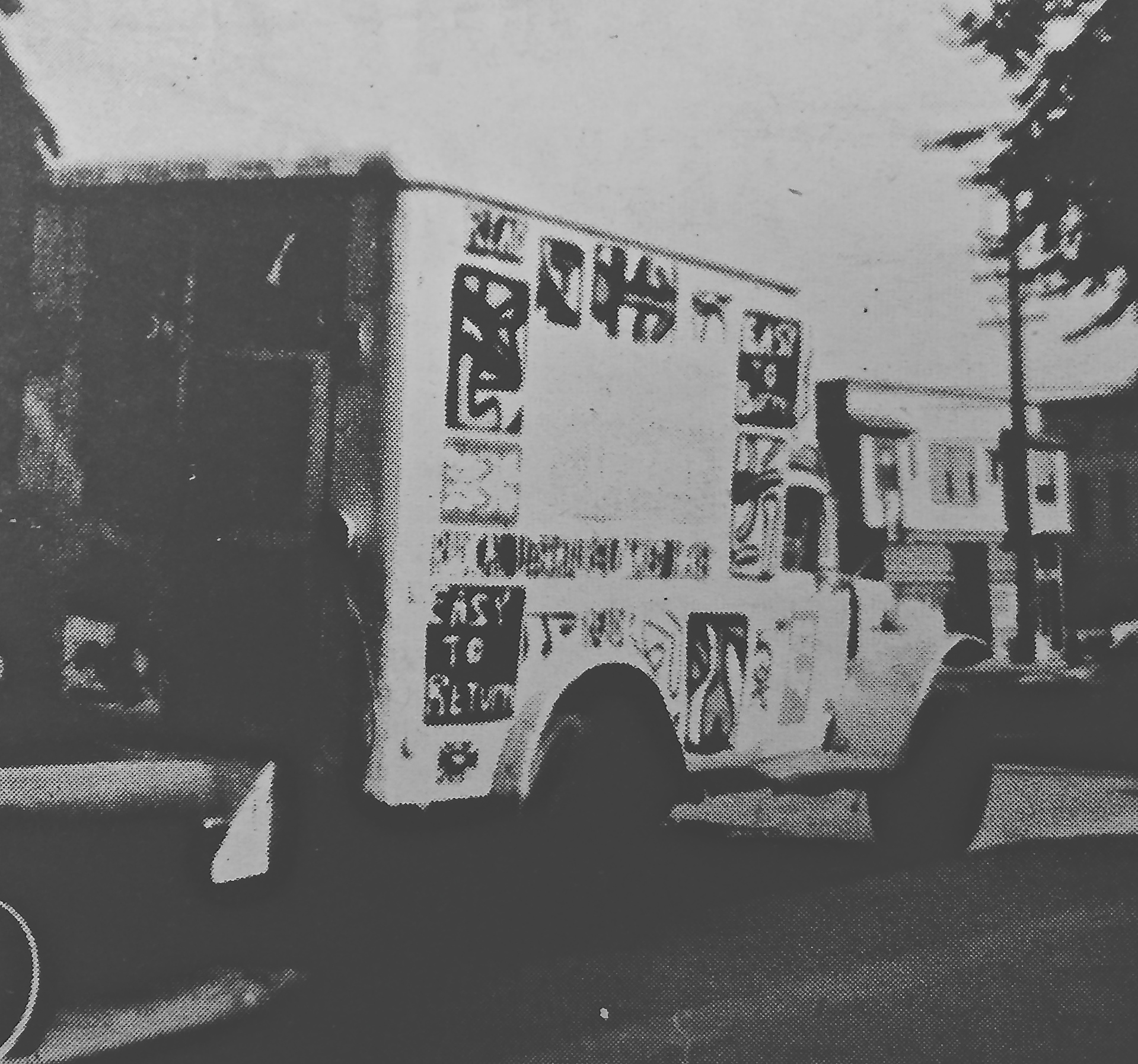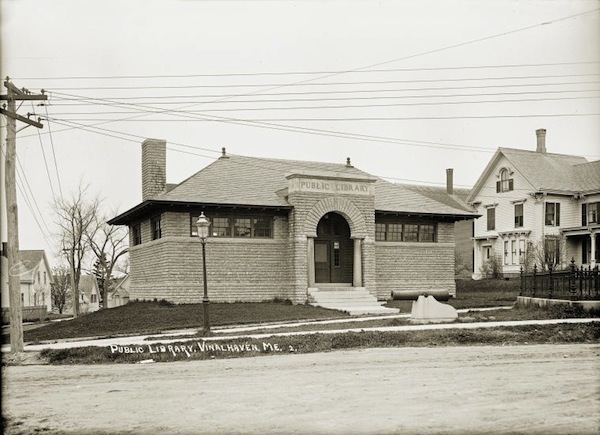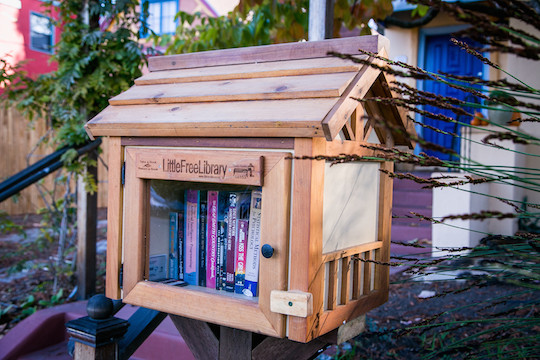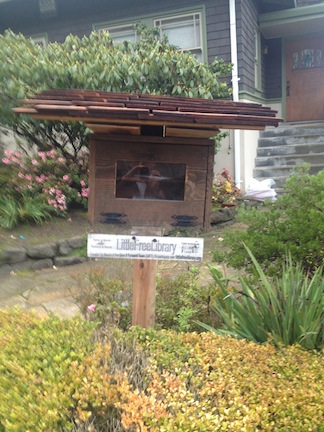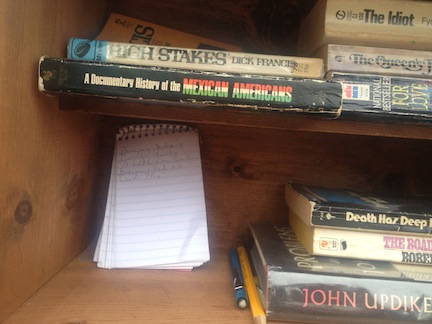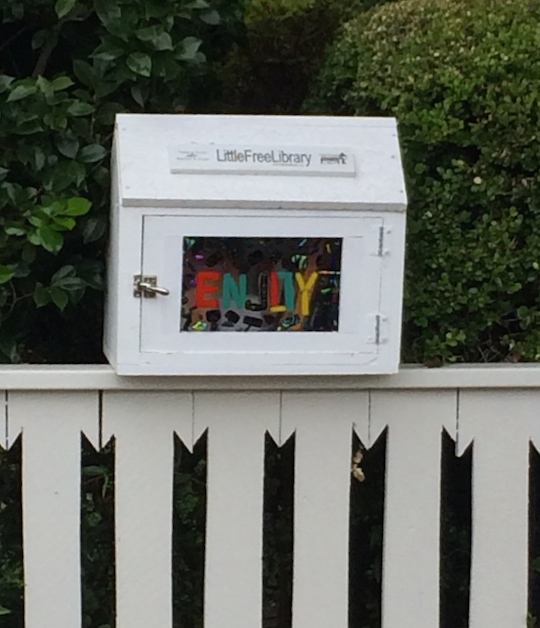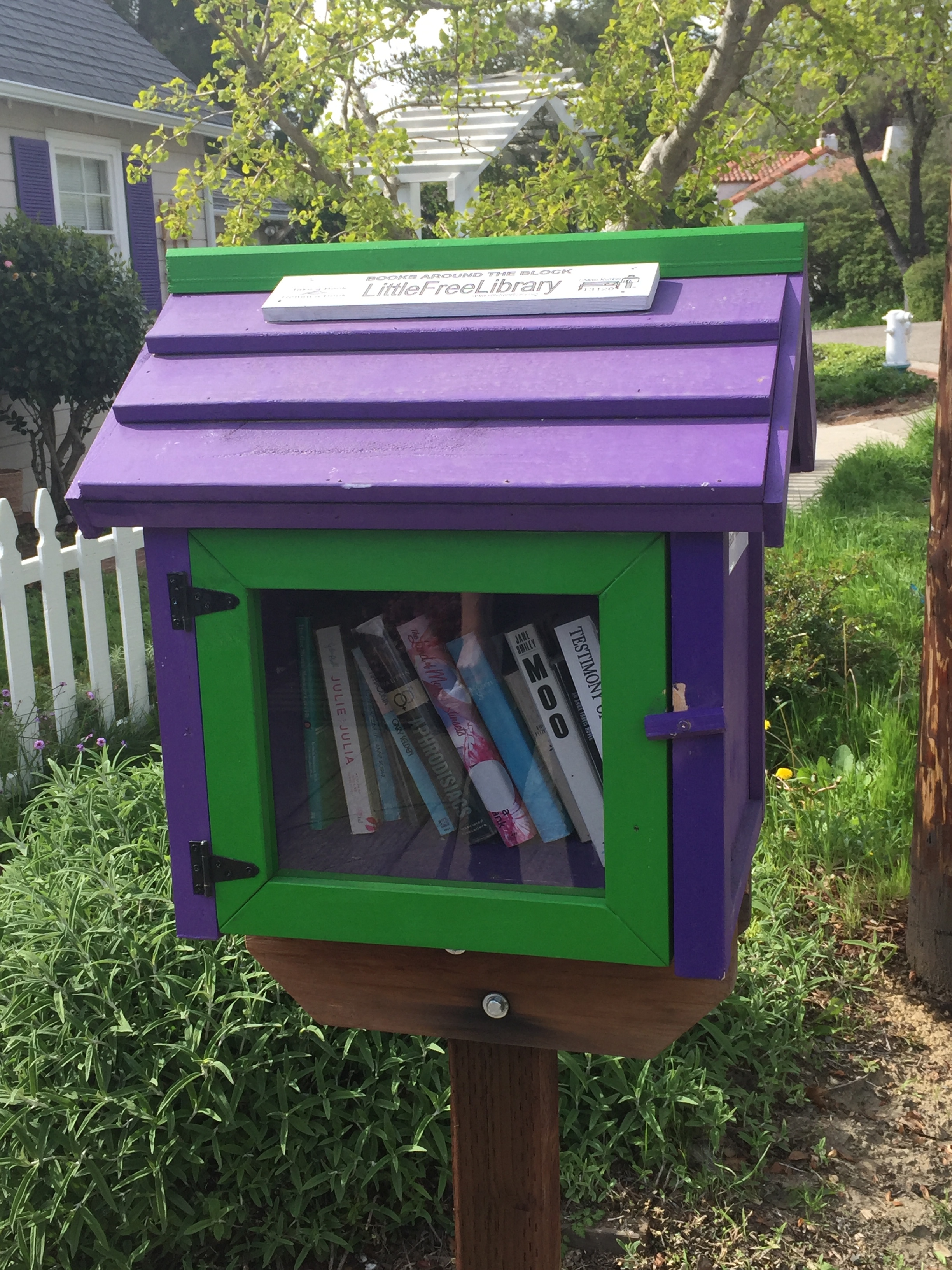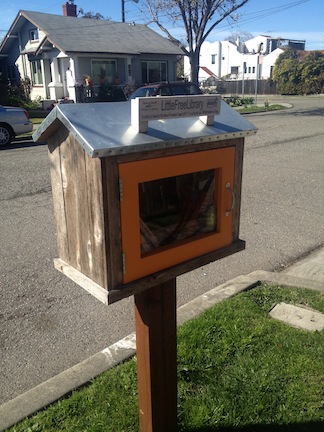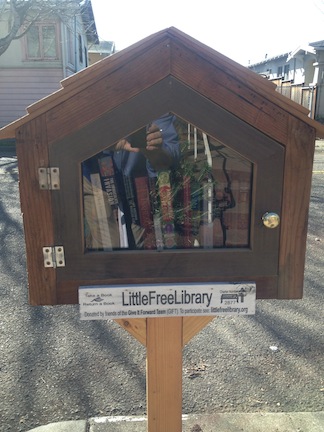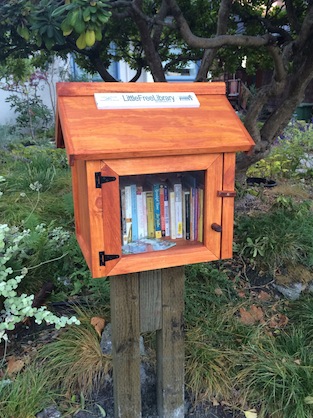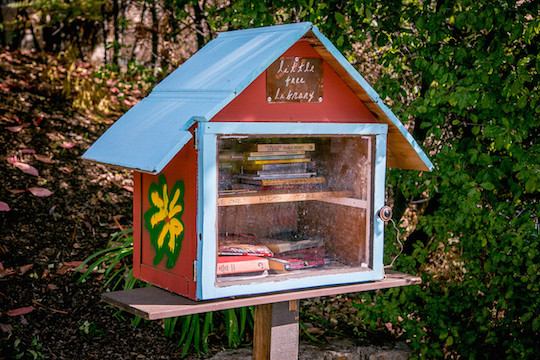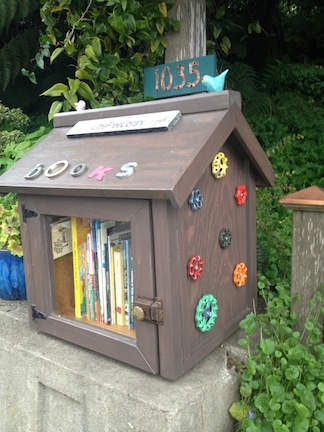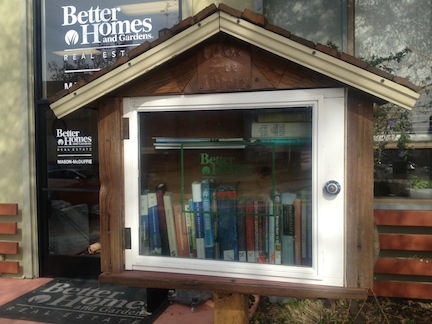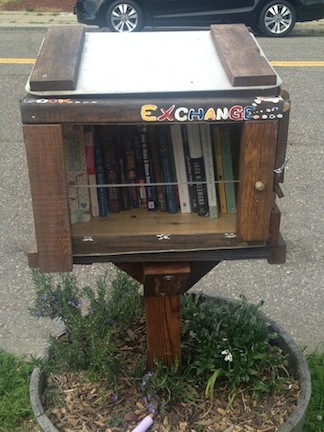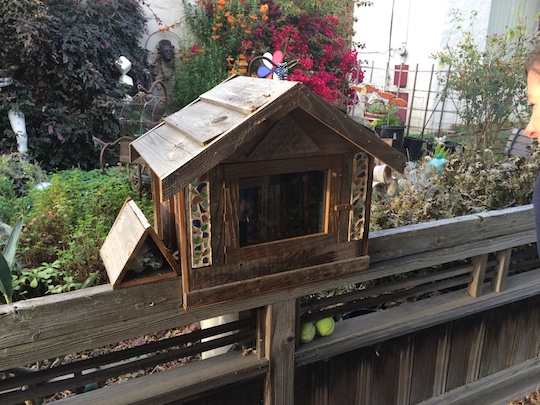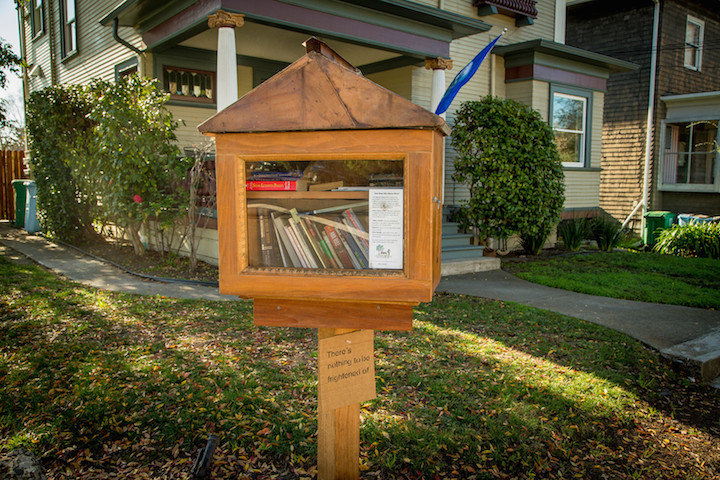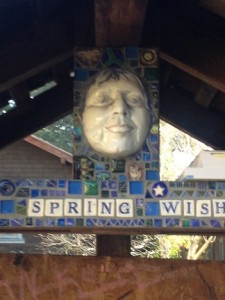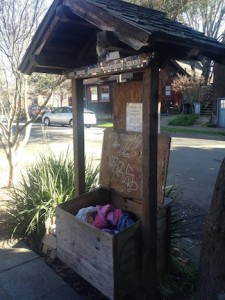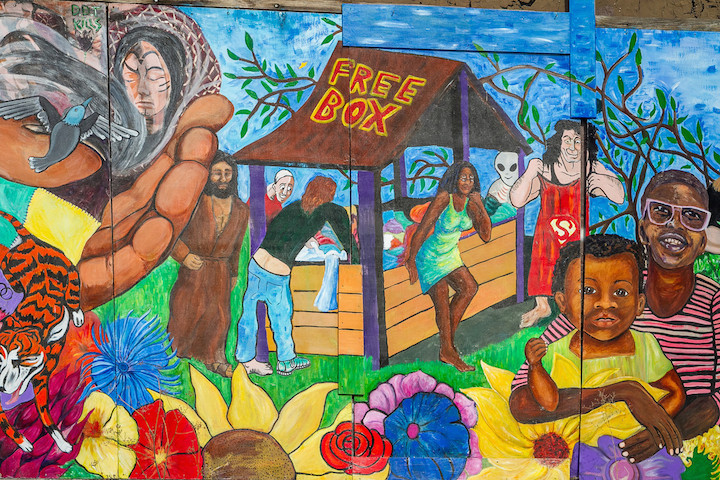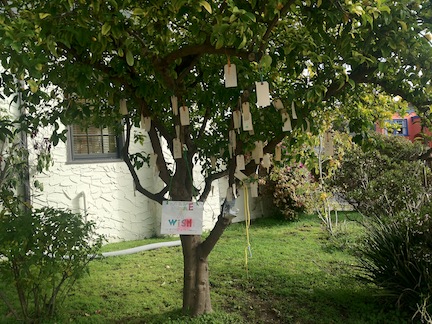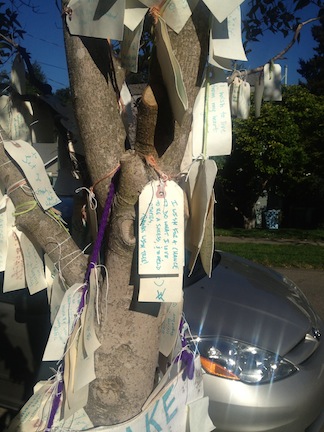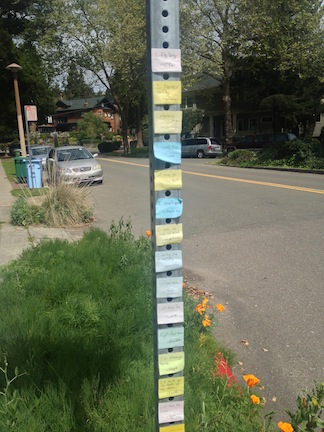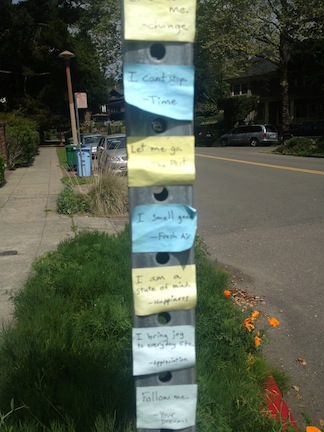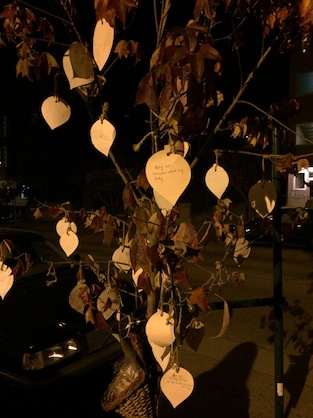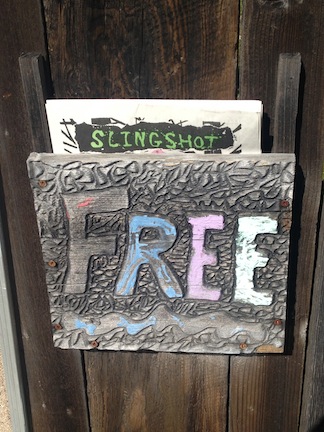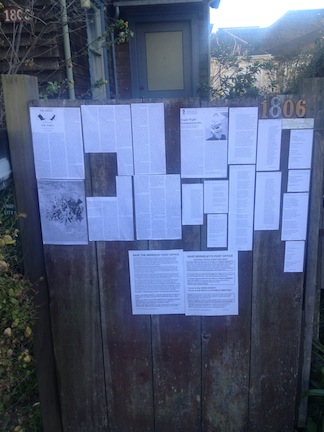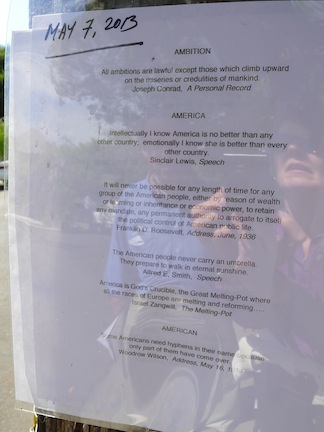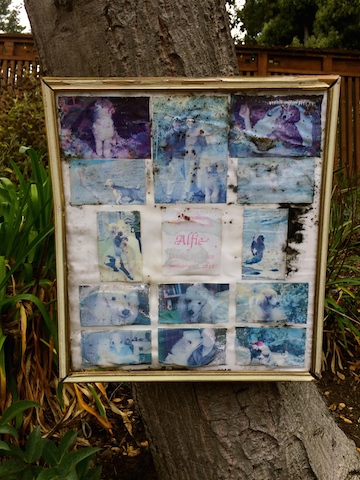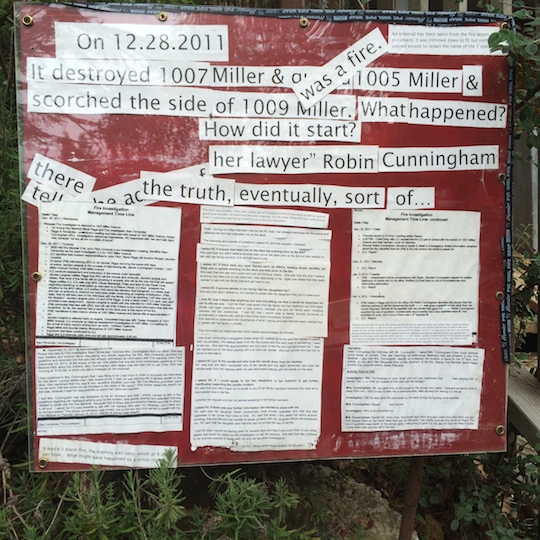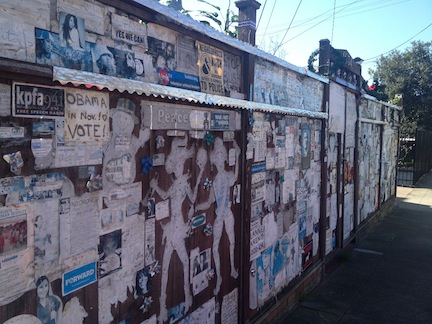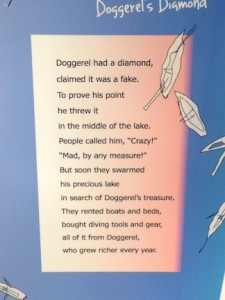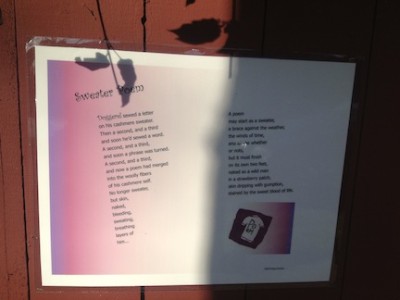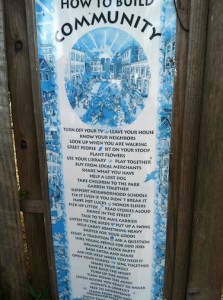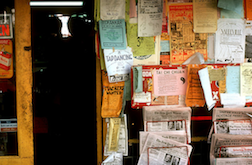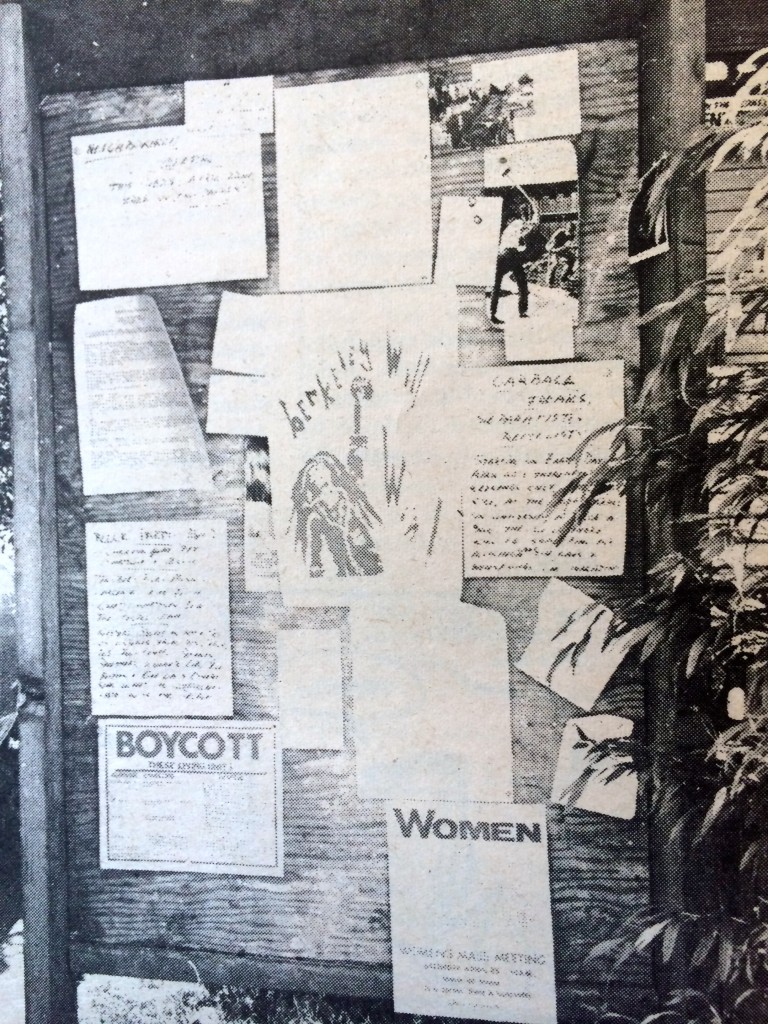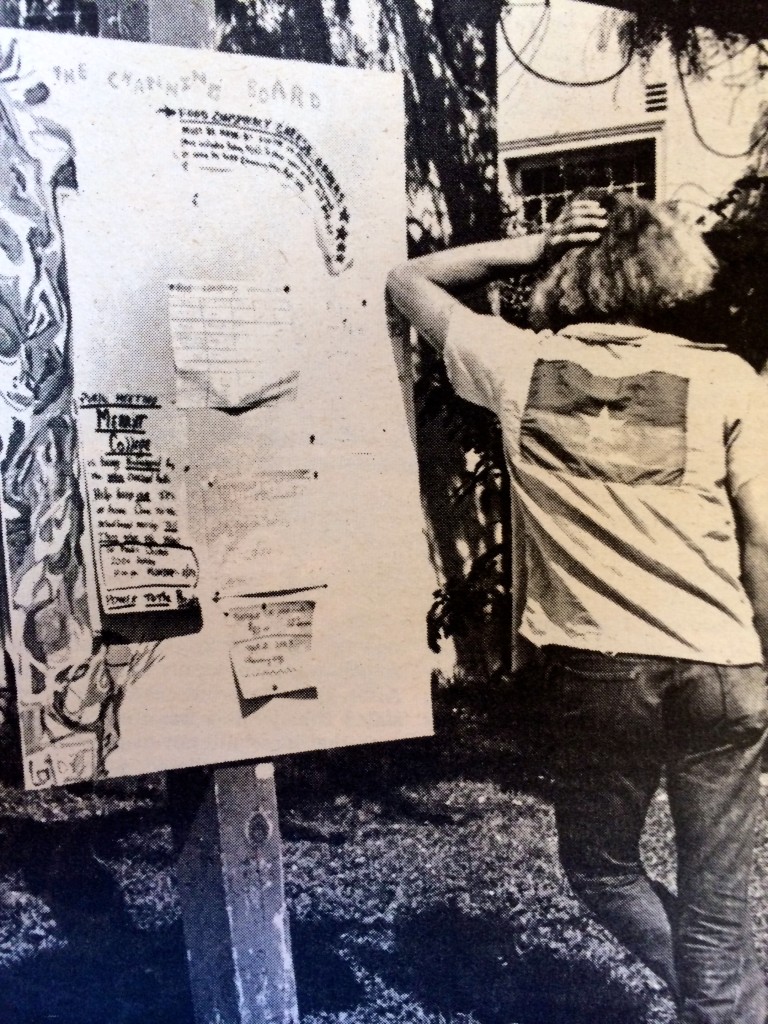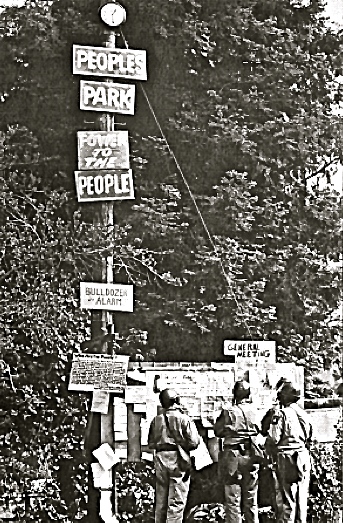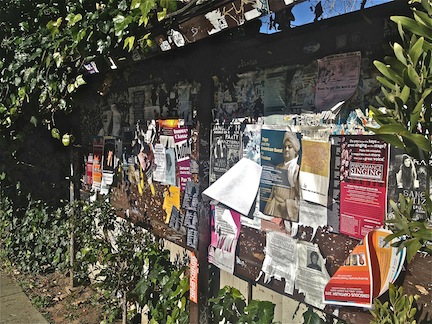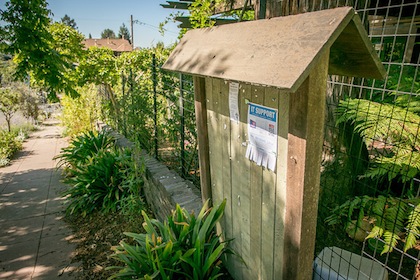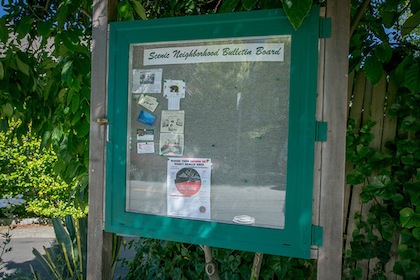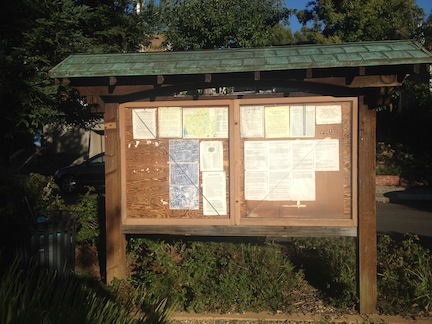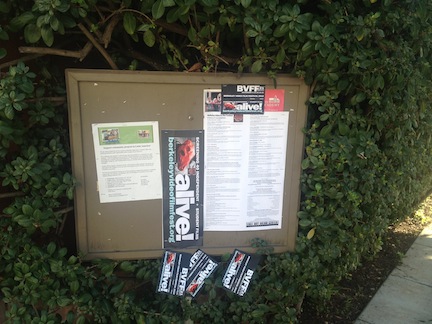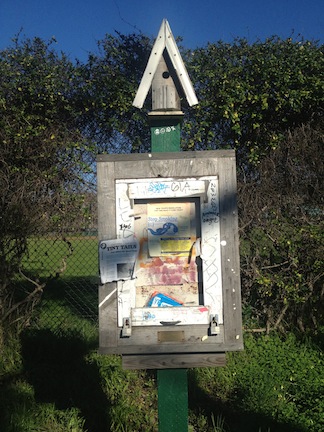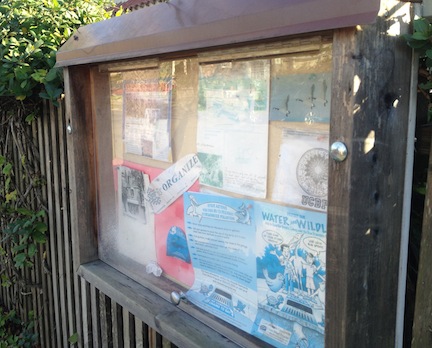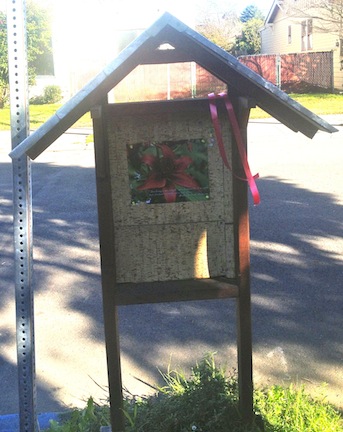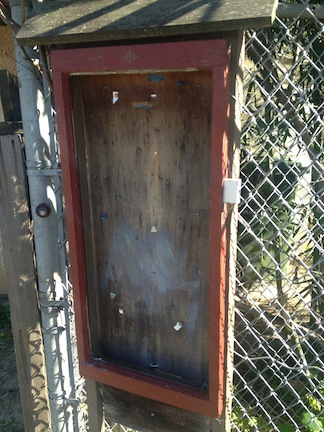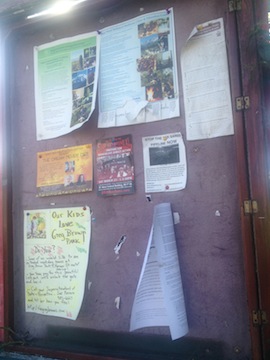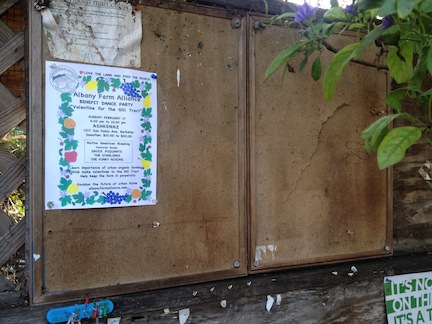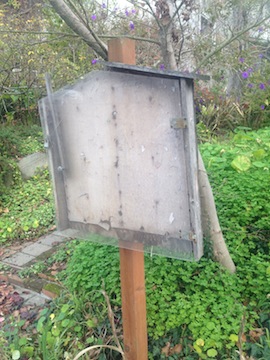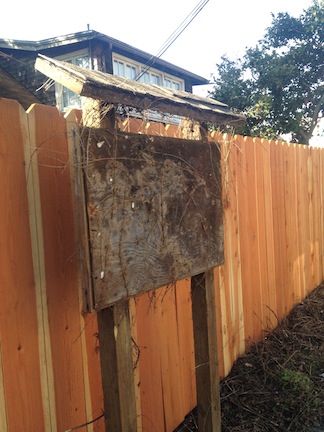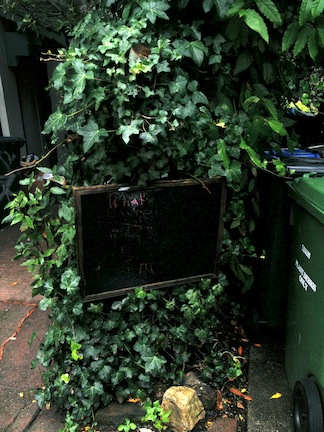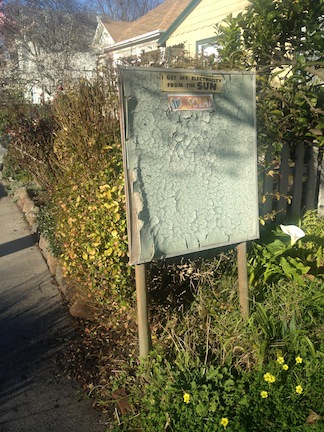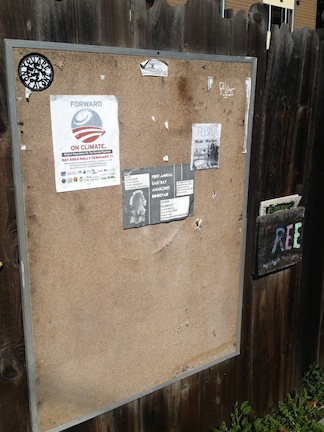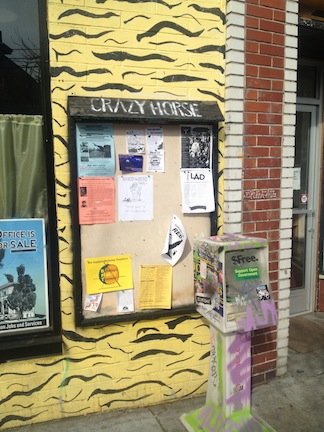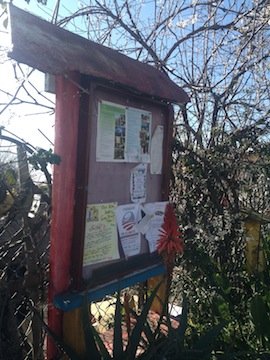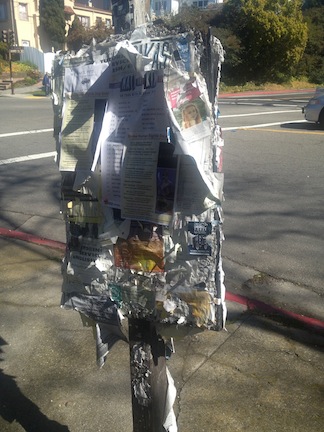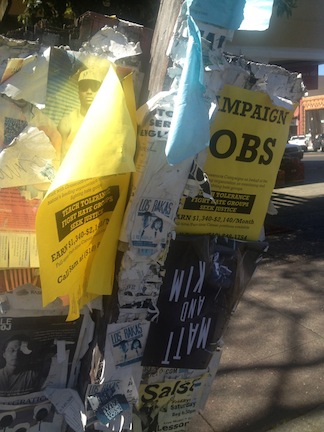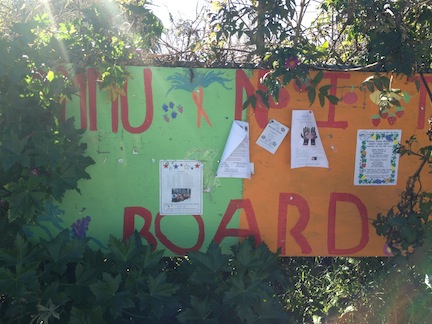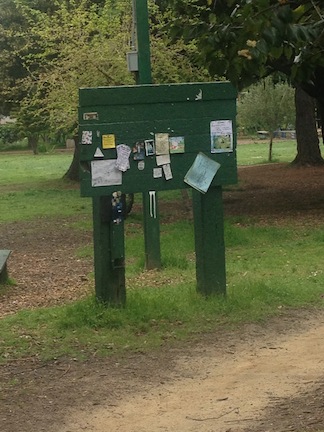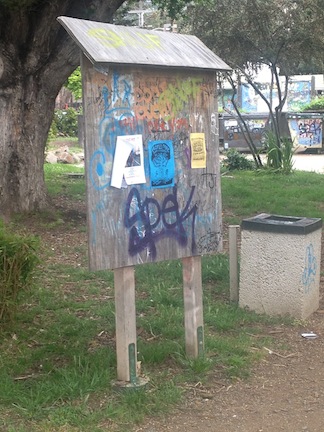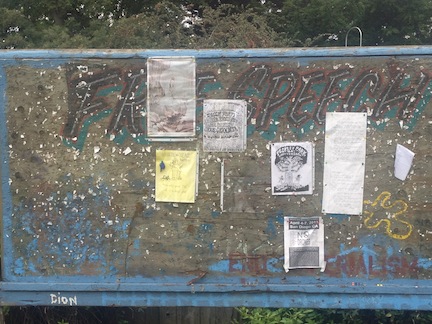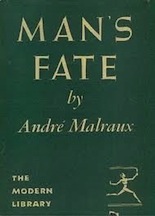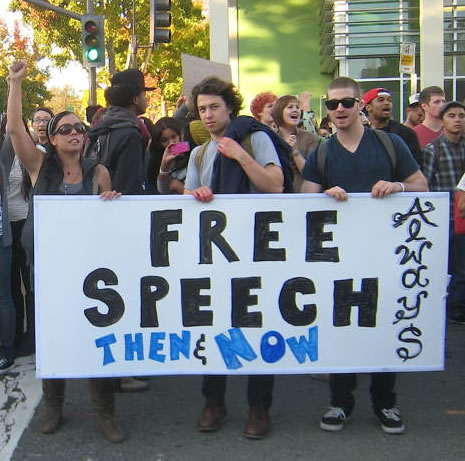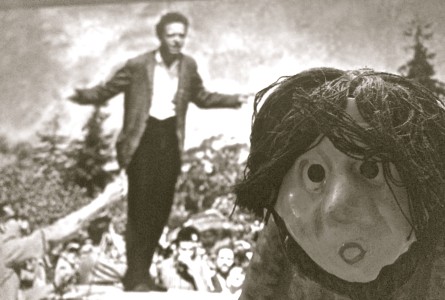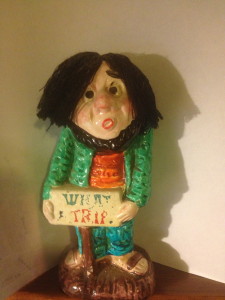We are approaching the 50th anniversary of the Free Speech Movement. We were the epicenter. Ground Zero. The heart of the storm. You probably know the basics. If not, read this essay or browse through this website And by all means no matter how much you know, spend a minute and listen to Mario Savio’s Most Famous Words. Oh my.
I have one of the best collections of buttons from the United Farm Workers of the 1960s and 1970s. I have a special place in my heart for buttons. Like this one:
Digression: Speaking of free speech, we can’t not mention Lenny Bruce. He blazed new trails in language, to be sure, and paid a price for his blazing. His last live concert album was recorded at the Berkeley Community Theater in December 1965, less than a year before he died.
Today, we honor Mario Savio with a plaque.
We honor the movement with a cafe at the entrance to Moffitt Library:
And in neon:
And in logos and signs:
And in bookstore windows:
We honor the movement, but do we live it? Do we practice it? Most importantly for my limited purpose, how do we manifest it in material culture?
Well, let’s start with books. A big part of free speech. In the years immediately after the Free Speech Movement, we had a portable Movement Library, photographed here by R. Abzug:
Cool! We still do sort of the same thing only different. We build houses on poles and create micro lending libraries. Take a book, leave a book. Most, but not all, are established through the auspices of Little Free Library, an organization that hopes to make as many micro libraries as Andrew Carnegie made big granite town libraries.
Berkeley has its share of little free libraries:
And one specializing in children’s books, the most nicely appointed one in Berkeley to be sure:
And now two ends of the spectrum. First, the corporate-sponsored one:
And then the rogue ones, same idea, no official sponsorship by the Little Free Library group:
While on the subject of giving things away, would you permit a slight digression, to a free clothes bin, named for animal rights activist and City Council member Donna Spring?
The idea of a free box is embedded in our culture.
Here it is celebrated in a mural facing south in the vacant lot on the northeast corner of Haste and Telegraph, the Berkeley Inn site.
Well, books, which is where we were before my digression, are a start. How about expressing your thoughts? Do we dare to speak our minds? We have several whimsical options, such as these two wish trees
Or this wish post at the Uplands and Encina:
Or this tree where in November, 2013, passersby were asked to describe what they were thankful to see leaving this season:
Less whimsically, we invite strangers to take and read our anarchist literature:
And we post broadsides on our fences and utility poles.
And, most commonly, we invite comment on community bulletin boards, hold-overs from a more politically active decade. A flashback, to the Northside Bookstore on Euclid, to get into the spirit of the bulletin board:
And then these ironic photos from People’s Park in May 1969:
Young men in the National Guard reading the bulletin board in the park that they had seized at great human and monetary cost.
And now to the present-day, the community bulletin boards of Berkeley:
A variation on the theme – blackboard instead of bulletin board:
A sad fact emerges from these photos. We don’t have a lot of say. Many boards are empty, near empty, and/or in a state of disrepair. So it goes, I guess, but let’s end with a show of strength, bulletin boards in People’s Park, where everybody gets a blister…
We have seen this story so many times, our hope and then our fate.
Our hope here may have exceeded our fate. Or maybe not. With People’s Park, yes, I see the argument. But speech? I don’t think so. It may be simply a question of technology. The bulletin board is perhaps simply a means of communicating that is no longer relevant. I think that’s right. But we have the vestigal boards, shards of material culture.
My friend wasn’t in Berkeley for the FSM in 1964, but he now claims that later in the 1960s he “rapped” (his word) with Mario Savio and Jack Weinberg and Jackie Goldberg. He says he has some photos to prove it.
What was it like? It was like these photos he said –


